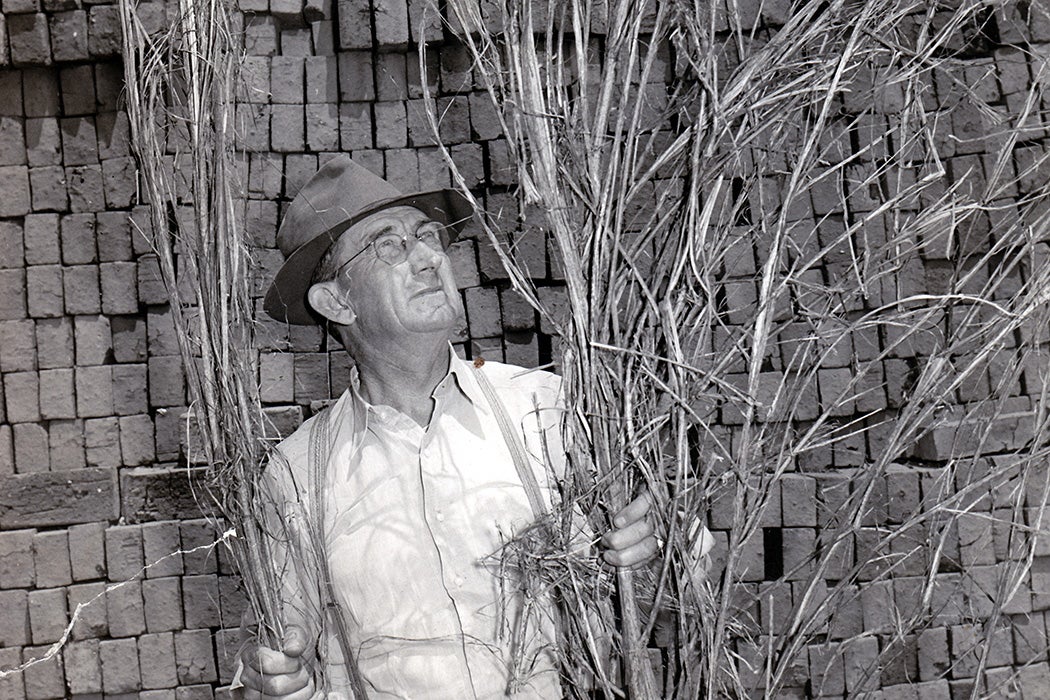A funny thing happened to hemp in the twentieth century. After centuries of being grown in North America for its fibers—used in rope and textile making—hemp was banned in the United States because it is made from one of the same plant species (Cannabis sativa) as marijuana. It fell victim to the war on drugs.
But hemp had actually been a “staple crop in North America” since before colonization, and cultivation continued through World War II. Focusing on Wisconsin, scholar Dirk Hildebrandt details the state’s “forgotten harvest” of hemp.
By 1918, Wisconsin had nine hemp mills, “nearly twice as many as the rest of the country combined.” Innovative cooperation between federal and state agriculture authorities, University of Wisconsin ag scientists, and the farmers themselves helped make the state the nation’s leader in hemp acreage and production by 1920.
World War II resulted in an enormous demand for domestic hemp, especially for naval rope, when foreign supplies of fiber were cut off. The federal War Hemp Program went all-out, with slogans like “Hemp for Victory.” In Wisconsin, the wartime labor shortage meant migrant workers were pulled from Texas and Mexico to harvest the crop. German prisoners of war were even employed in the state’s hemp mills.
But the end of the war saw the federal government drop all interest in hemp production. Cheaper foreign fibers once again entered the country. Hemp’s association with illicit marijuana grew. In 1950, Wisconsin’s crop had no buyers. The last hemp mill in the state closed in 1957. In 1970, the Controlled Substances Act, establishing a new reign of federal drug policy, had hemp down as a Schedule 1 controlled substance, along with the likes of heroin and LSD.
But even though they are botanically the same species, hemp and marijuana are different. They’ve been cultivated to do very different things. This was recognized by the 2014 Farm Bill, which reintroduced industrial hemp production after nearly half a century. Between 2013 and 2018, hemp production in participating states, including Wisconsin, grew from 0 to more than 90,000 acres. Production in 2020 covered 465,787 acres.
Industrial hemp is defined as a non-drug variety of Cannabis sativa with 0.3% delta-9 tetrahydrocannabinol (THC) or less. THC is the psychoactive component in marijuana. A plant with more than 0.3% THC is still illegal under federal law.
Another component of Cannabis sativa in all its forms is cannabidiol, better known as CBD. CBD is legal to use in products that aren’t regulated by the FDA. The perceived health benefits, mostly untested, of CBD have driven up production of hemp in the US and around the world.
Weekly Newsletter
Like corn, hemp has many uses. Rope, textiles, and paper are traditional, but hemp stalks can also be used for insulation, compost, animal bedding, and fiber board. There’s even a hemp-based concrete substitute called hempcrete or hemplime. Hemp seeds are used for food flour, hemp milk, cooking oil, and beer—as well as dietary supplements. The seeds are a rich source in polyunsaturated omega-3 and omega-6 fatty acids, essentials for human health. Body-care products, biofuels, and paints and varnishes are other uses of hempseed oil.
In other words, hemp’s back. After all, in the five-thousand-year history of hemp cultivation on Earth, half a century’s ban doesn’t seem very long.
Support JSTOR Daily! Join our new membership program on Patreon today.







